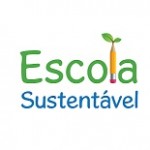 The Sustainable School Project was created in 2011 with support of PUCRS Institute for the Environment and Natural Resources (IMA) and the Environmental Management Committee (CGA). The team of the Sustainable School Project is composed by PUCRS professors and students from several areas of knowledge and proposes surveying school environmental performance through an assessment of various items, including water use, energy use, correct waste disposal, choice of suppliers and more sustainable materials, among others (Table 1). From this survey and using a continuously updated database of sustainable actions, we can help Schools embrace environmental responsibility among their students, professors, administrative and technical staff and managers.
The Sustainable School Project was created in 2011 with support of PUCRS Institute for the Environment and Natural Resources (IMA) and the Environmental Management Committee (CGA). The team of the Sustainable School Project is composed by PUCRS professors and students from several areas of knowledge and proposes surveying school environmental performance through an assessment of various items, including water use, energy use, correct waste disposal, choice of suppliers and more sustainable materials, among others (Table 1). From this survey and using a continuously updated database of sustainable actions, we can help Schools embrace environmental responsibility among their students, professors, administrative and technical staff and managers.
| Table 1. Axes of Action | |
|---|---|
| Water | Valuing water resources, optimizing the resource through improvements in facilities and awareness-raising campaigns. |
| Energy | Discussing several forms of energy, optimizing energy use through adaptations in facilities and awareness-raising campaigns. |
| Raw materials | Identifying the main materials purchased for school daily activities, seeking sustainable alternatives, optimizing the use of materials through changes in administrative routines and awareness-raising campaigns. |
| Suppliers | Seeking more sustainable suppliers (local companies, certified companies, solidarity economy…). |
| Waste | Identifying the main types of waste produced, defining correct segregation and disposal (Disposal Map), awareness-raising campaigns. |
| School Area | Evaluating the possibility of including sustainable niches in the school environment (tree identification, tracks, worm farms, vertical/horizontal/tire gardens, cisterns, herb spirals, lakes, animal raising…). |
| Teaching and Extension | Identification of pedagogical and extension activities linked to environmental sustainability (lectures, workshops, scavenger hunts, films…) |